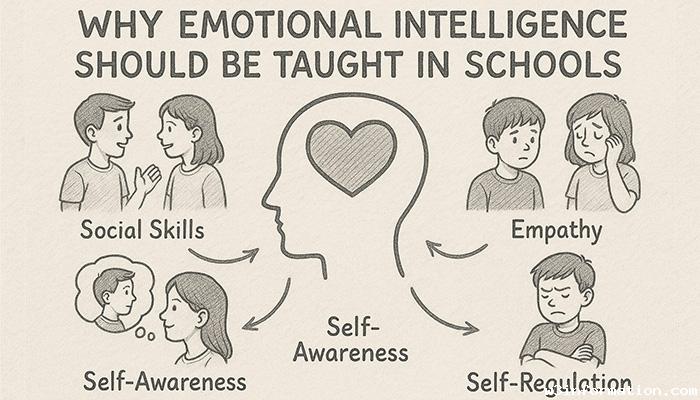Iconic Fashion Moments in Movie History
Film fashion extends beyond mere garments by playing a critical role in storytelling through character definition and mood establishment while influencing cultural patterns. Cinema has delivered memorable fashion moments throughout history that continue to influence both the fashion industry and cultural trends. Historical fashion memories include everything from glamorous gowns to rebellious streetwear. This blog examines unforgettable fashion moments from film history which maintain their influence on fashion trends and continue to captivate audiences.
Audrey Hepburn in Breakfast at Tiffany's (1961)
Audrey Hepburn's portrayal of Holly Golightly in Breakfast at Tiffany's stands as one of film history's most memorable fashion moments. Under designer Hubert de Givenchy's direction, Audrey Hepburn achieved iconic elegance and sophistication in her black sleeveless dress paired with a statement pearl necklace and sleek updo. Countless fashion trends emerged from Hepburn’s minimalist chic style in the film which remains timeless. "The Little Black Dress" (LBD) is recognized as an enduring symbol of timeless elegance in both cinema and fashion circles.
Marlon Brando took on the role of Stanley Kowalski in the 1951 film A Streetcar Named Desire.
Through his role as Stanley Kowalski in A Streetcar Named Desire Marlon Brando transformed men's fashion trends. The white t-shirt that Marlon Brando wore throughout his entire performance became the ultimate representation of masculine and casual style. The combination of Brando's raw performance and his basic wardrobe choices established the white t-shirt as a timeless element of men's fashion that continues to influence modern style. This style represented a fresh masculine ruggedness while standing in clear opposition to the refined aesthetics that defined Hollywood's golden age.
Sarah Jessica Parker played Carrie Bradshaw during the run of Sex and the City from 1998 to 2004
Sarah Jessica Parker's portrayal of Carrie Bradshaw in Sex and the City established her as a fashion icon for women who cared about style during the late 1990s and early 2000s. Countless iconic fashion moments emerged from the series yet Carrie’s extravagant and playful outfits like the tutu paired with a tank top and stilettos stood out among them. By merging haute couture with high street elements Carrie demonstrated the essence of New York's diverse fashion landscape while establishing herself as a trendsetter. The series maintains its fashion impact today as both designers and fans reference Carrie’s individual style as inspiration for their creative approach to personal expression through clothing.
The Seven Year Itch (1955) features Marilyn Monroe's memorable scene with her iconic white dress.
The scene from The Seven Year Itch in which Marilyn Monroe's white halter dress is lifted by a subway vent stands as one of cinema's most memorable fashion moments. William Travilla created the white dress that became emblematic of Monroe’s natural allure and sexual magnetism. The scene elevated the dress to legendary status while establishing Monroe as both a fashion and cultural icon. The scene and dress maintain their seductive playfulness as they remain a constant reference point in pop culture which shows how fashion shapes characters and cinematic moments.
Cher Horowitz in Clueless (1995)
The fashion depicted in Clueless significantly influenced 1990s fashion styles through the character Cher Horowitz portrayed by Alicia Silverstone. The decade's defining fashion look emerged from Cher's preppy ensemble which included plaid outfits and matching sets alongside knee-high socks. The yellow plaid skirt suit stands as a cultural touchstone for Clueless fans while referencing both 60s fashion trends and 90s style. Mona May's costume designs in Clueless perfectly represented Beverly Hills teenage fashion through Cher's wardrobe which combined premium brands with school-day style elements that inspired many fashion trends.
Keira Knightley in Atonement (2007)
Keira Knightley’s performance as Cecilia Tallis in Atonement demonstrates how period costumes can achieve historical precision while delivering powerful cinematic appeal. The green silk dress worn by Knightley in the film's critical scene represents an iconic fashion moment. Jacqueline Durran's dress design embodies timeless beauty while capturing romantic drama that reflects the character's emotional conflict. The outfit's intricate design combined with its vivid colors created an unforgettable scene in the film which many regard as one of the finest fashion moments in cinematic history.
The Matrix (1999)
The Matrix's sleek futuristic designs transformed cyberpunk fashion while making a lasting impact on pop culture throughout the late 1990s and early 2000s. Keanu Reeves (Neo) and Carrie-Anne Moss (Trinity) wore all-black leather coats and sleek minimalistic clothing which became iconic symbols of The Matrix universe. Kym Barrett's costume design crafted a groundbreaking futuristic fashion standard which merged technological elements with rebellious military-style elements. Elements from The Matrix style continue to shape both fashion and pop culture as they appear in movie designs and streetwear collections.
The character transformation of Lady Gaga in A Star Is Born (2018) showcases her evolution from an unknown artist to a celebrated superstar.
As Lady Gaga evolves from an emerging artist to a renowned superstar in A Star Is Born her style development keeps pace with her character's journey. Ally's character reaches an iconic fashion peak during "Shallow" when she performs wearing a striking black sequined gown that balances simplicity and impact. The scene demonstrates Ally’s character development and self-assurance while her clothing indicates her rise to fame. The movie’s costume selections transformed Gaga’s image by presenting a natural and grounded aesthetic which stood in contrast to her earlier avant-garde fashion choices. The movie costume demonstrates Gaga's ability to adapt to different roles and illustrates the capacity of proper attire to convey a character's emotional progress.
Vivien Leigh starred as Scarlett O'Hara in the 1939 classic Gone with the Wind.
The costume design for Vivien Leigh's portrayal of Scarlett O'Hara in Gone with the Wind stands as a timeless example of cinematic fashion excellence. Walter Plunkett's luxurious costume designs were instrumental in showcasing the Southern belle's splendor throughout the film. Scarlett’s green velvet curtain dress stands out as one of cinema’s most memorable fashion pieces which she transforms into various iconic appearances throughout the film. The gown stands as a testament to Scarlett’s cleverness and tenacity and remains a lasting symbol of her character. The extravagant costumes from Gone with the Wind created a permanent influence on the fashion world of cinema.
Emma Watson starred as Belle in the 2017 movie Beauty and the Beast.
Emma Watson delivered a performance as Belle that beautifully combined traditional beauty with contemporary intelligence. Emma Watson’s costume for the film’s dance scene showcases a modern twist on the traditional Disney princess aesthetic through its updated elegant yellow ball gown silhouette. Jacqueline Durran created costumes for Belle that successfully merged timeless elegance with progressiveness while reflecting the character's intelligence and adventurous spirit. The gown stood with Belle’s other functional yet fashionable attire as an emblem of empowerment for younger audiences through its combination of classic princess allure and modern-day relatability.
Conclusion
The cinematic representation of fashion extends beyond the screen to create significant cultural impacts. Both Audrey Hepburn’s Little Black Dress and Lady Gaga’s sequined gown stand as unforgettable fashion landmarks that have made a permanent mark on the worlds of film and fashion. The clothing worn by characters has turned them into enduring symbols representing style authority and personal identity which showcases how fashion and filmmaking remain interconnected throughout history.
 Why Emotional Intelligence Should Be Taught in Schools
Why Emotional Intelligence Should Be Taught in Schools
 The Future of Higher Education: Trends to Watch
The Future of Higher Education: Trends to Watch
 How to Create an Effective Learning Environment at Home
How to Create an Effective Learning Environment at Home
 Top 10 Study Tips for Students
Top 10 Study Tips for Students
 How Online Learning is Changing the Education Landscape
How Online Learning is Changing the Education Landscape
 How to create backend CRM using React JS
How to create backend CRM using React JS